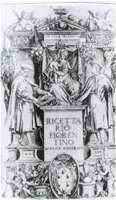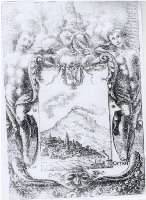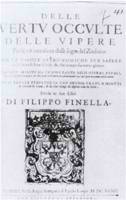
Antibiotic therapies today
Returning to more recent times and observations based on a scientific rationale, it should be noted that in 1870 the English bacteriologist B. Sanderson had noticed that if a bacterial culture or tissue of guinea pigs was contaminated by a mold, especially by penicillium, there was no development of germs without however thinking of a bactericidal action of the latter. The following year, the English surgeon J. Lister became aware of what had been observed by Sanderson, did similar experiments with the result of the development of a mold, identified by his brother mycologist, such as Penicillium Glaùeùm.
In subsequent years, W. Roberts (1874) Professor of Medicine in Manchester and the physicist J. Tyndall (1875) noted that where fungi developed, especially Penicillium, it is difficult to grow the bacteria for an antagonistic action attributed to the removal of oxygen to the latter and not to the production of inhibitory substances. After the report of Bizio and Bassi the studies in the microbiological field flourished greatly.
In this context it should be mentioned the important contribution and commitment of L. Pasteur, then R. Koch and F. Pacini who attributed to the cause of the vibrio cholera in Florence in 1854-55, reflected by the Lancet in 1884 and later confirmed by Koch. In 1880 Pasteur guessed that the antagonism between germs was due to the production, by one of them, of the substance which prevents the development of the other and according to Ignaz Semmelweis the germs caused puerperal fever. These, since 1850, had accused that the disease introduction through the genital tracts was caused by contaminant from the outside. In 1882 Koch succeeded in cultivating the tubercle bacillus, which was named after him, on new culture medium of agar-agar in a test tube to obtain a larger surface of culture, while his student R. Petri devised the plates that took his name. Such research gave way to the "hunting" of microbes and the cultivation of the main pathogens.
A few years later in 1885 V. Babes, professor of bacteriology, University of Bucharest, after the discovery of culture media of the inhibitory action of certain pathogens on the development of other admitted that "disease caused by a bacterium can probably be treated with another bacterium". Also in France L. Pasteur and J. Joubert (1887) noted that the anthrax bacillus was not pathogenic if it was cultivated with harmless bacteria. For this phenomenon, called into question some sort of antibiotic antagonism, without mention of this term, as it stated that "the excretions derived from the vital functioning of a common bacterium may object to a vital functioning of the same size of another pathogen."
In fact, the authors observed that animals infected with anthrax bacilli do not die from the disease if they are inoculated with other organisms.

In the same year A. Cantani noticed that certain germs placed in cultures of certain pathogens destroy them by depriving them of the conditions of life for which he proposed the idea to use this pervasive power of harmless bacteria to combat the action of pathogenic bacteria hostile to their development but harmless to humans. For this reason instilled colonies of thermo Bactherium, harmless to humans, in the lungs of a patient suffering from tuberculosis with significant clinical improvement and the disappearance of the pathogen from sputum, which in its turn was no longer infectious for the guinea pig. Caiani, Medical Clinic of Naples, was thus the first in the medical literature, who implemented the therapeutic concept that pathogenic bacteria could fight other bacteria hostile to the development of the latter, but harmless to humans. The result was also published in the International Journal of Medical Sciences, however, it was written in Italian, the language that was little understood at that time, and the communication quickly fell into obscurity. The progress of studies on the phenomenon of bacterial competition was made saw with different but still modest fortune by an Italian G. Zagari, who in 1887, managed to preserve the guinea pigs from anthrax inoculating their cultures of streptococci. In 1887 A. Peacock tried to quantify the influence of a germ on another and using plates, tubes of gelatine and agar with "drafting scale," dosed the activity of a germ to others. C. Garré Swiss, a surgeon and bacteriologist, spoke about the antagonism caused by the production of a specific substance easily diffusible that inhibits the growth of some bacterial species and is ineffective for others. In 1888 a Frenchman E. De Freudenreich, cultivating the piocianeo (pyocyanea) and the phosphorescent bacterium in glass flasks, noticed the existence of a bacterial antagonism that inhibited the growth of other germs on the medium in which they had lived.
Studies and laboratory experiments spread considerably during this period and in 1889 P. Vuillemin coined, as it had already been mentioned, the famous words "antibiosis" and "antibiote" and L. Manfredi, a collaborator of Cantani in Naples, after an extensive and thorough review of the works appeared in the literature concluded that: "a nutrient medium in which a bacterium lived can become refractory against a new invasion of other bacteria," and " under certain conditions of existence of certain micro-organisms are constantly antagonists of others: the future of bacteriology depends on the knowledge of the conditions under which the bacterial antagonism occurs. "
At the same time R. Emmerich, known as an internationally renowned German microbiologist who studied the Escherichia coli pathogen named in honor of German colleague T. Escherich, observed that infecting experimental animals with streptococci, this infection protected them from contracting anthrax. A Frenchman C. Bouchard has found a favorable bacterial antagonism between Bacillus Piocianeus (Pseudomonas aeruginosa) and anthrax bacilli in rabbits infected with this pathogen. Together with O. Loew he conducted similar research showing that culture piocianeo kills the anthrax bacilli. It was hypothesized that in the filtered bacteria there must be an "enzyme", which in 1899 was given it the name "piocianasi" that "dissolved these bacilli" and was given as injection once or twice and allowed the destruction of anthrax bacilli and survival of rabbits infected with lethal doses. Studies conducted by the authors on piocianasi showed that it was equipped with proteolytic activity, resisted at a temperature of 98°C and vacuum drying, and was non-toxic for rabbits. Tying the piocianasi to proteins, thus forming complexes so called Immune Proteins, it was hypothesized to develop its action through the immune induction because, when it was given to rabbits as prophylaxis, up to 12 days before a thousand times lethal dose of anthrax protected them from infection and death.
The taken path has opened new and interesting possibilities so that even in the wake of other experiments, piocianasi was used in human infections with diphtheria, meningitis, etc... until the First World War.
In studies and research the thesis of a student in Cologne K. Doehle was also useful. These in an agar plate with a sowed culture of bacilli of Carbuncle, in the center of the gel, a piece of paper soaked in positive gram of Micrococco, antagonist of Carbuncle, highlighting, after a short incubation period, that around the paper there was a zone of inhibition to the growth of the latter pathogen. The photograph of the plate, which he had taken, is the first photographic document of the phenomenon of anabiosis while the technique he had developed is the first method for the assay of antibiotic susceptibility that will be used about thirty years later by Fleming and then by all other researchers. In addition to the important researches of significant German authors there was the contribution of Italian scholars, though less known, because published in Italian magazines unknown and unread abroad or at least were not mentioned. In 1890 G. Gasparini, studying an air germ Streptothrix foersteri (fungus, today called Streptomyces), noted that this "digested" the cell wall of some microorganisms. Gasparini highlighted the function and the metabolic mechanism that is the bacterial antagonism that first had been called "antibiote" by Vuillemin.
In 1891, L. Olitzki confirmed the above-mentioned research showing that Bacillus fluorescens liquefaciens inhibits the growth of carbuncle and staphylococcus. In 1895 V. Tiberio, a young doctor of the Medical Maritime Corps, a native of Sepino in the province of Campobasso, published in the January issue of the "Annals of Experimental Hygiene" an article the result of long research "on the extracts of some molds." These, after being grown on culture media were removed and after an appropriate medium treatment it was studied the bactericidal power they have on bacilli of anthrax, typhoid, Escherichia coli, staphylococci, streptococci and vibrio cholera.
Tiberio came to the conclusion that "in the studied mold there were contents of the soluble principles in water supplied with bactericidal action. The properties of these molds are obstacle for life and the spread of pathogenic bacteria." Such extracts, in particular that of Aspergillus Flavescens, injected intraperitoneally in mice previously infected with typhoid bacilli or with the vibrio cholera had a preventive and therapeutic action. Military obligations to the war of conquest of Libya, which took him away from his studies, and early death prevented Tiberio to continue his brilliant researches which not only anticipated those of thirty years of Fleming on the "mold juice" but also enforced therapeutic possibilities.
The research of B. Gosio, Head of Laboratory of Bacteriology of the Italian Public Health was important but at the same time unfortunate.
These, the year after the publication of Tiberio, isolated from a culture of Penicillium glaucum that was studying as the causative agent of pellagra and growing as a parasite on maize giving it a characteristic of grey-green color, an active ingredient in crystalline form action antibiotic that prevented the development of anthrax. He produced little substance "and because of the small amount he could not do experiments on animals" and his main purpose was the study of pellagra, attributed to "moldy" maize but not antibiotics, so he did not continue the investigation.
The nineteenth century ended after being crossed by a single thread that has seen the commitment and dedication of many scholars and scientists. We could say that it began with the concept of the existence of microorganisms, germs called by Spallanzani, in the previous century, that "gave rise to mold that, in turn, inhibits the growth of bacteria" (Bizio), the concept "that all infections of any kind without exception, are produced by parasitic plants or animals that can be highlighted "(Bass), than bacterial antagonism of many researchers.
All these observations remaining devoid of fact, with rare exceptions, were to lead to practical applications to the discovery of antibiotics in 1900. So the twentieth century began with the ongoing search for a mechanism and a substance that were effective against the major pathogens responsible for many fatal diseases and with the era of antibacterial chemotherapy, that is, production in the chemical laboratory of new substances capable of destroying the pathogens and saving the human body known as the "host organism". The research of R. Gelmo from Viena was important as in 1908 he synthesized the para-amido-benzensulfonamide and P. Ehrlich who got the Nobel prize in 1908 and in 1910 culminated in the development of Salvarsan (save or heal) which followed the Neosalvarsan relatively less toxic. This compound was the first antiluetic remedy developed by Ehrlich with his Japanese friend Sahachiro Hata in the Imperial Institute of experimental therapy, thanks to the support of the Prussian Empire in Frankfurt am Main.








